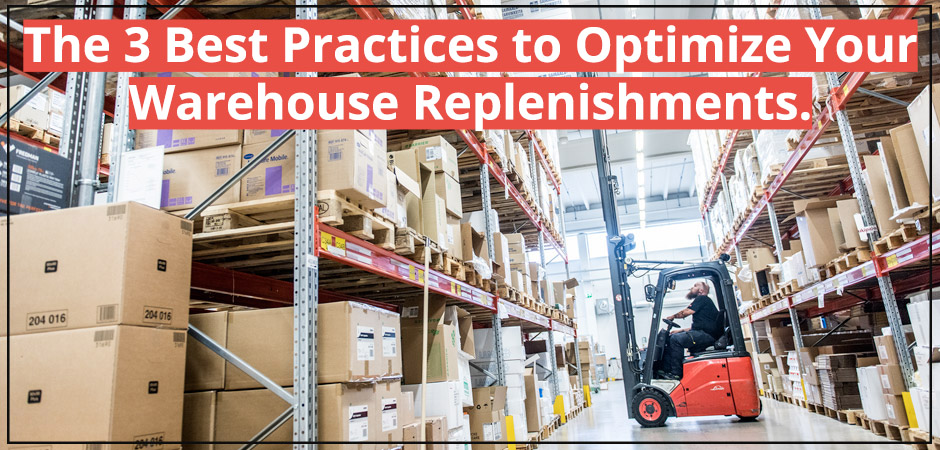The 3 Best Practices to Optimize Your Warehouse Inventory Replenishments
This best practice is about making replenishments inside the warehouse. It is important to stay on the top off replenishments always in your warehouse. If you have just one shift that you are running it would help a lot. If you spend extra hours in the evening and then do the topping off all your active locations it will be helpful for the pickers in the next shift. In the next morning when the pickers come after all the locations will be full and they can start picking right away without wasting time in replenishments.
- If you have two shifts running either choose the second shift or have a third shift if possible and keep doing the top off replenishments. There are active replenishment locations and these active locations have Min and Max. Whenever your inventory falls below min, replenishments are going to get triggered or it will get triggered if there is an order that needs a lot of picks from a particular location.
- This will drive the location down which will trigger a replenishment. So you will get possibly three priority replenishments. Priority 40, Priority 50, and Priority 60. Priority 60 is always the top off. You should never cancel the replenishment task which is another big thing that people have learnt many times.
- Typically as soon as you turn on the WMS if you see that it is becoming tough to handle your replenishments due to issues you should not cancel them in the middle. When someone cancels the replenishments for some reason and the replenishment were not done quickly and immediately you will be stuck with those orders that are not completely picked.
It happens like this because when the picker comes to the location and there will be no inventory that came in. The inventory which was supposed to be there got stopped in the middle. The allocated inventory for the order against the one that is replacing inventory must be given a priority of 60 and then priority 40 and priority 50. Priority 40 should be made before picking, by the time the Pickers go to the location the inventory will be ready to pick. The priority 50 approaches, during the picking because what could happen is that, the picker had to make multiple rounds to the same location where he picks. There will not be enough space, so the priority 50 will triggered and when the priority 50 gets in the picker comes and picks up the rest of the units. Then in the priority 60 you cannot always have the products there stored, but still you should create a replenishment and then just leave it there. You have to finish it as if the product is filled assuming the product is already there.

That’s why it’s important to stay on the top off your replenishments and especially when you have implemented it through WMS it takes just a few weeks to get that understanding and see the impact of the replenishments in your processes. The supervisors and operators will be urged to do their replenishments so that they can stay on the top off the replenishment even more effectively. You can even dedicate a couple of people for replenishments and make sure that only the right products shows up at the active locations, so that way when the pickers come, the product is really there.
While managing those priority 40, 50, and 60 and so on you can suddenly bump up and order that priority 40 to priority 30 so that becomes the hottest task with the replenisher. The replenisher that is executing the task will pick it up right away I mean this needs task management to work or at least he can do this based on reports and if it’s not a huge facility. You can always have that marked off as the first thing that needs to be done. We will talk about the task management eventually in the coming video sessions which is another best practice to implement.
Do subscribe to our YouTube Channel.


 1. Increases EPP, using budgeted line items.
1. Increases EPP, using budgeted line items. Millennial friendly technology, less onboarding time, very easy adoption – touch screen keypad, and 43% of Millennials already use IOS, familiar with Facetime, 85% of Millennials aged 18-24 own devices and 86% aged 25-34 own them, consume a lot of video on their smartphones, and are highly comfortable with this medium, they understand and like apps.
Millennial friendly technology, less onboarding time, very easy adoption – touch screen keypad, and 43% of Millennials already use IOS, familiar with Facetime, 85% of Millennials aged 18-24 own devices and 86% aged 25-34 own them, consume a lot of video on their smartphones, and are highly comfortable with this medium, they understand and like apps.